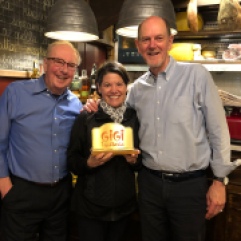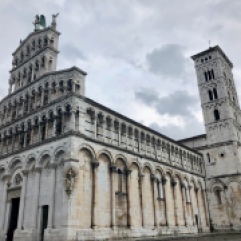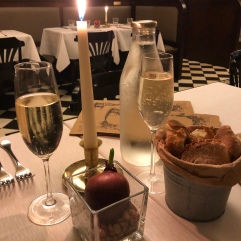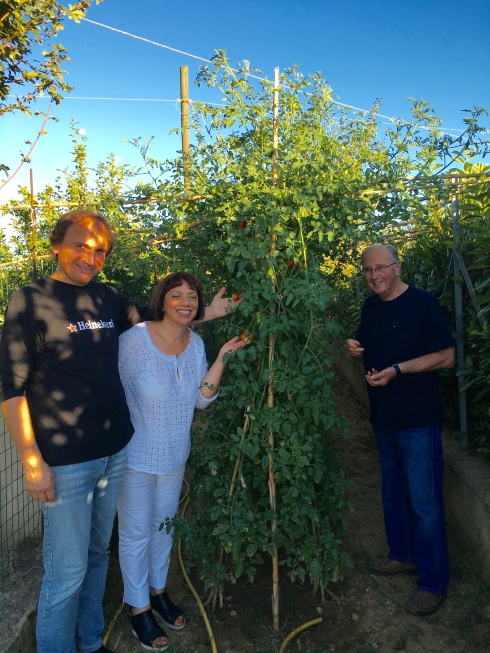With warm days, cool nights, and the moon just right, Tuscan mushroom seekers are busy, and that includes Carlo, our resident fungaiolo (mushroom hunter/seeker). He heads to the mountain forests, filled with a variety of trees including chestnut, pine, oak and beech, and the ideal habitat for funghi. If you ask, however, just know that a dedicated fungaiolo never reveals where he/she searches.
While he headed off to the forest, Fernanda surprised us with one of Len’s favorite dishes, spaghetti alle vongole. At the local pescheria, or fish market, one can easily find the sweet, tender and tasty veraci, or tiny baby clams in the shell, as well as slightly larger clams which she combined for a delicious dish.
Carlo finally returned with a smile on his face that spelled success. He proudly displayed his bounty of mushrooms, including the prized Porcini, Gallinaccio (Chanterelle), Ovuli (orange color, egg-shaped), Mazza di Tamburo, (drum mallet or stick shape), and a few miscellaneous stragglers. Knowing where to go, and having an aged Panda, both help in the hunt.
In Italy, Len and I have planted and harvested vegetables and picked fruit, tomatoes and olives, but we had never really cleaned mushrooms, not ones freshly picked from the forest. And what a learning experience it was. Fernanda was anxious to get started cleaning.
We had, of course, the same question most would ask:
“How do you know if they are poisonous?”
And the answer, as you might guess, is experience. Carlo accompanied his dad beginning at age seven. Fernanda’s parents both scoured the forest since she was a child. And now they just know, a skill passed from generation to generation. They know the varieties, where to look, what to pick, what to leave behind, how to clean, what to cut off, how to store, how to serve, and so on. And thus we began to learn, under the watchful eye of Fernanda’s mom and instructions per Fernanda and Carlo.
Using the end of a knife, the dirt is removed by a quick but not too firm scraping.
Many mushrooms are like sponges, so after the first cleaning, they are lightly rinsed, not soaked.
And then on to others.
Len and Carlo took the residue we had scraped off to the orto which will become compost for next year’s tomatoes. Remember, it’s Italy, and nothing is thrown out if possible.
They even found a few more tomatoes on the vines.
Then, Fernanda went to work, quickly and skillfully slicing the porcini for freezing.
Her hands flew though the motions, and soon we had 14 packages of porcini ready to freeze for future pasta, risotto, and/or frying.
Once the aromas began filling the house, we knew she had started cooking…
But the “pièce de ré·sis·tance” was the fresh porcini risotto. Move over farm to table, this was mountain to mouth! The smell, the taste, the WOW. The best I have ever had.
Complimenti to Carlo, our favorite fungaiolo,
and to Fernanda, our talented cook!
Thanks for the lessons, the food, the fun and your friendship!
No matter the season, we continue building memories, each and every wonderful day.
Ciao,
Judy






















































































































































































